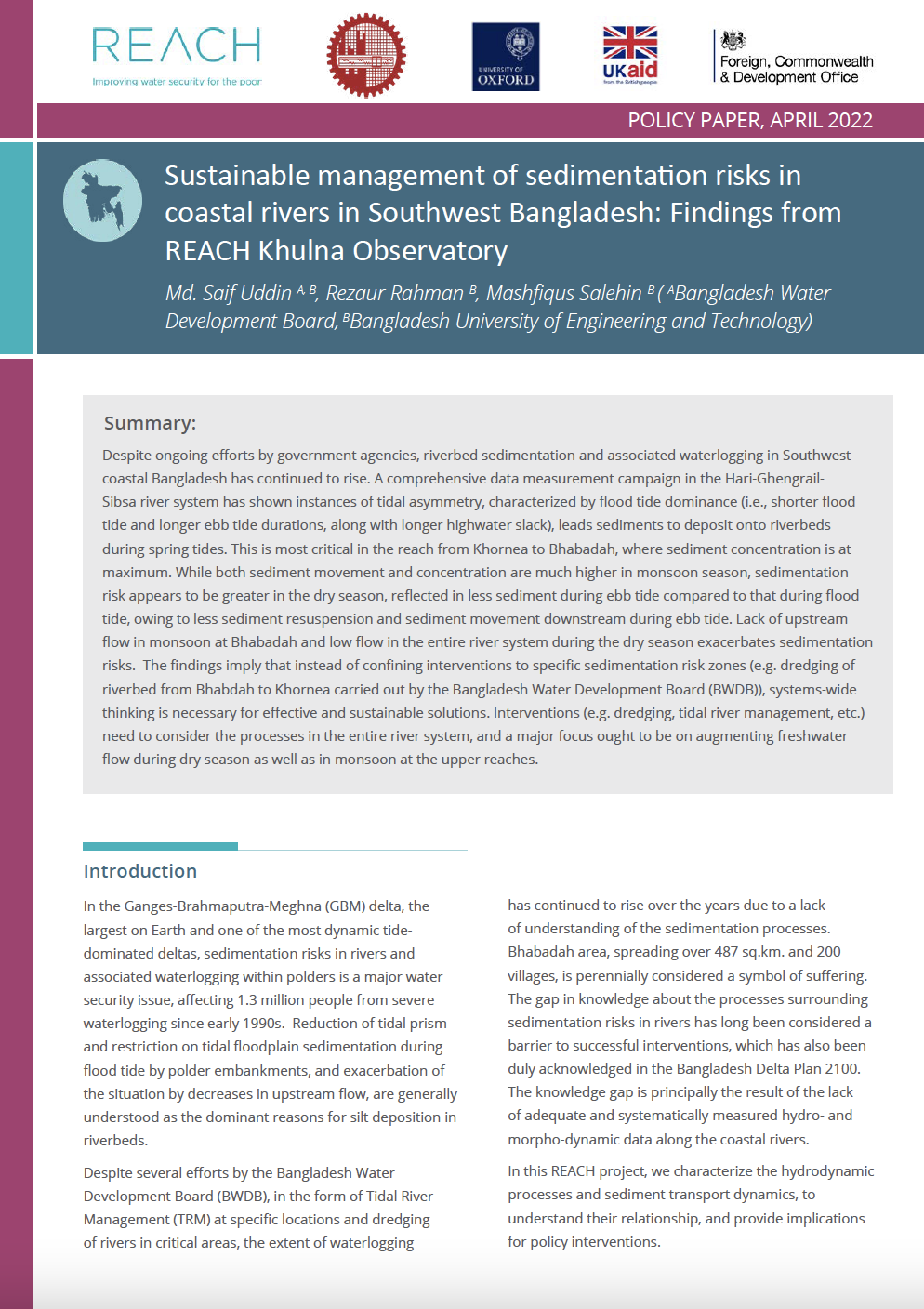Authors: Md. Saif Uddin, Rezaur Rahman & Mashfiqus Salehin
Despite ongoing efforts by government agencies, riverbed sedimentation and associated waterlogging in Southwest coastal Bangladesh has continued to rise. A comprehensive data measurement campaign in the Hari-Ghengrail-Sibsa river system has shown instances of tidal asymmetry, characterized by flood tide dominance (i.e., shorter flood tide and longer ebb tide durations, along with longer highwater slack), leads sediments to deposit onto riverbeds during spring tides. This is most critical in the reach from Khornea to Bhabadah, where sediment concentration is at maximum. While both sediment movement and concentration are much higher in monsoon season, sedimentation risk appears to be greater in the dry season, reflected in less sediment during ebb tide compared to that during flood tide, owing to less sediment resuspension and sediment movement downstream during ebb tide. Lack of upstream flow in monsoon at Bhabadah and low flow in the entire river system during the dry season exacerbates sedimentation risks. The findings imply that instead of confining interventions to specific sedimentation risk zones (e.g. dredging of riverbed from Bhabdah to Khornea carried out by the Bangladesh Water Development Board (BWDB)), systems-wide thinking is necessary for effective and sustainable solutions. Interventions (e.g. dredging, tidal river management, etc.) need to consider the processes in the entire river system, and a major focus ought to be on augmenting freshwater flow during dry season as well as in monsoon at the upper reaches.

